

The Mississippi Basin is home to more mussel species than any other freshwater basin in the world.
And they're dying...
It is estimated that 143 mussel species are native to the Mississippi Basin.
Their names are fantastical—as colorful as their nacres:

Today, 15 native species are extinct
41 are endangered
2 are threatened

Overall, mussel populations have declined 70% in the last 100 years.

From "The Elements" by Giulio Carpioni, 1640-60
Metis (Anglicized: Blackfoot) mythology refers to a mussel shell as the container in which all the world's water is held. It is an apt description.
Freshwater mussels have high ecological significance, providing filtration, substrate stabilization, and oxygen.
When describing mussels, western scientists also turned to myth, calling them Naiads, after the enigmatic and often mischievious Greek water spirits.
But to truly understand the plight of the Mississippi's mussels, a different form of mythmaking must be analyzed. Of the myths we tell of riches, capital, and the price of progress.
The story of Naiads is a story of stories, and like many stories, it begins with the promise of treasure.

When an irritant, such as a parasite, or a grain of sand, enters the shell of a freshwater mussel, the mussel forms a hard coating of nacre, otherwise known as mother of pearl, around the object. Over time, a pearl is formed.

An 1870 fasion advertisment published by Currier & Ives that prominently features pearls.
In the late 19th century, pearls were considered an upretentious form of jewerly, as suitable for queens and millionaires as for commoners.
Coincidentally, in 1890, the average monthly wage for a hired farm hand was $18.33.
However, a single freshwater pearl could fetch anywhere from a few cents, to hundreds, even thousands of dollars. Particularly large, or colorful pearls were often announced in newspapers, sometimes several states away.

A Kansas newspaper notice of a prominent pearl sold in Pairie du Chien, Wisconsin.
If a stretch of river became known for large pearls, such as the Fox River in Illinois, Pearl Rushes typically followed.

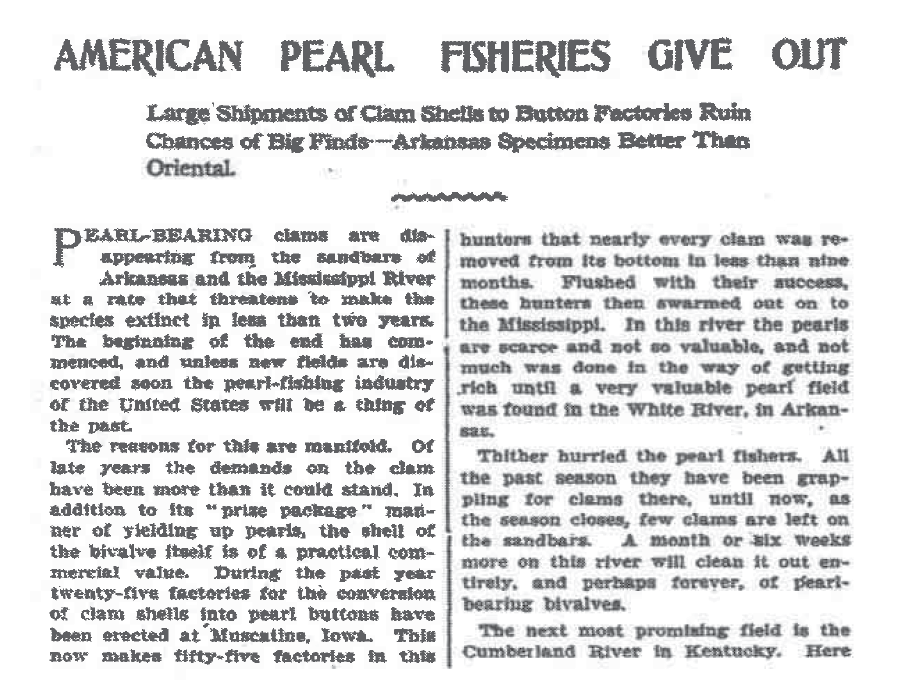
New York Times article from September 28, 1902.
The lure of pearl riches decimated local mussel populations. While some did find fortune, most pearlers switched occupations after rushes subsided.
Some, however, turned to a different part of the mussel for their fortune...


According to legend, in the 1890s, a German immigrant named John Boepple cut his foot on a mussel in the Sangamom River, and then had a brilliant thought: why not use the shell to make buttons?
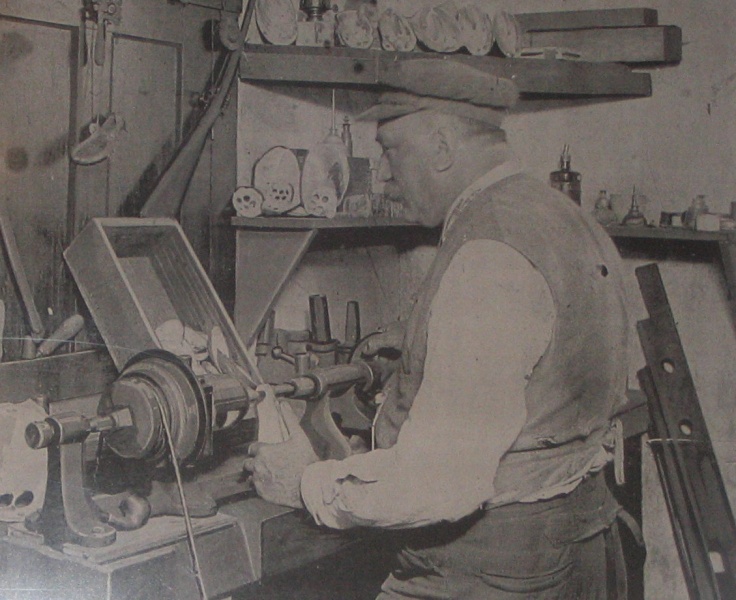
John Boepple cutting buttons. Year unknown.
In reality, Boepple had been a button manufactuer in Germany, and was lured to the Upper Mississippi by the prospect of abundant mussel resources.
In 1890, with aid from the McKinley Tariff, which raised prices on imported marine mussel shells, Boepple started his own button cutting factory in Muscatine, Iowa. Within 10 years, Muscatine was the button capital of the world, housing dozens of factories, and buying shells from up and down the Mississippi.

Beopple's Button Factory in Muscatine, Iowa, 1902.
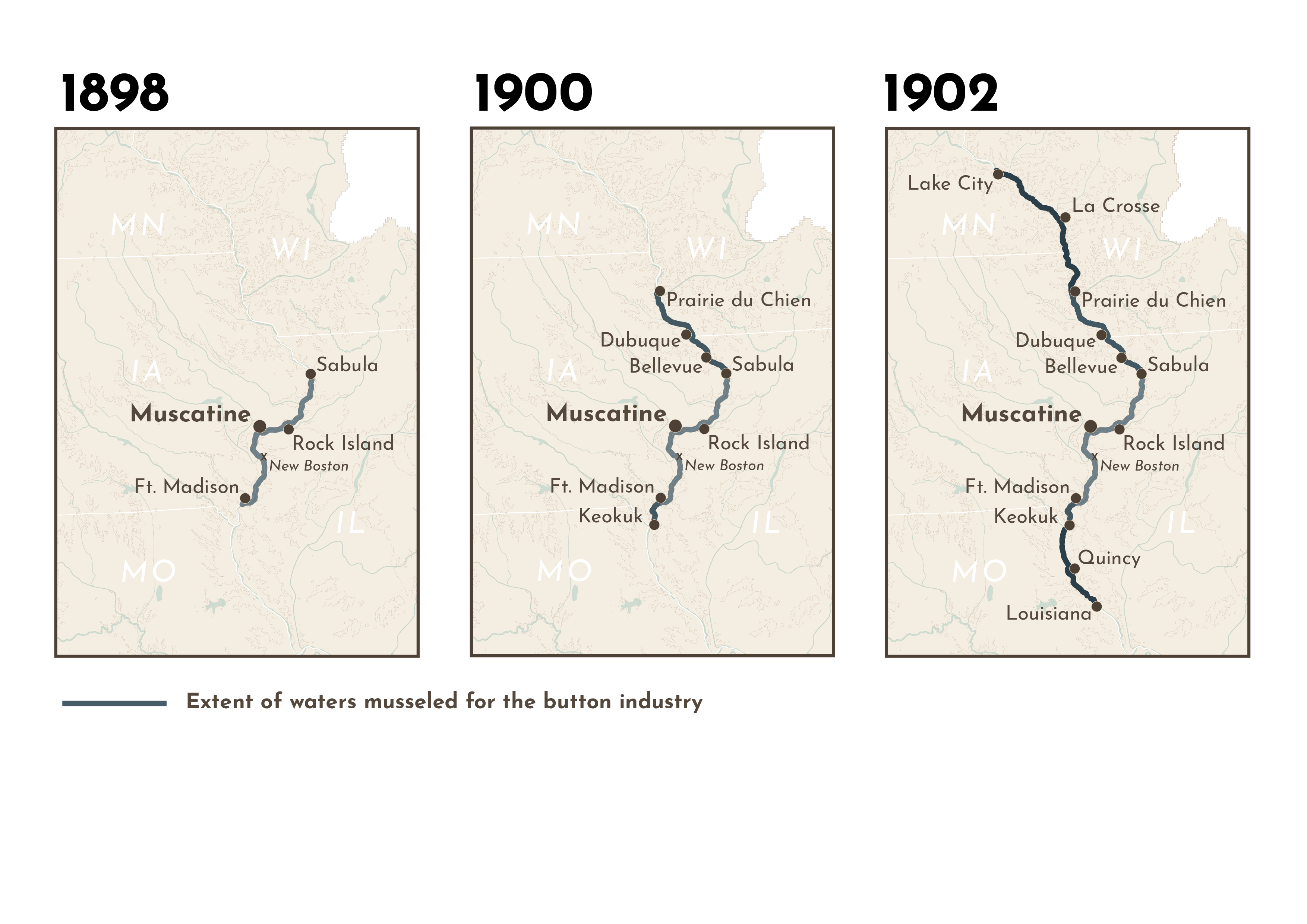

4th Street, Muscatine, Iowa, paved with discarded mussel shells. 1902
Over 38,000 tons of shells were harvested in 1908, and the industry itself peaked in the 1910s.
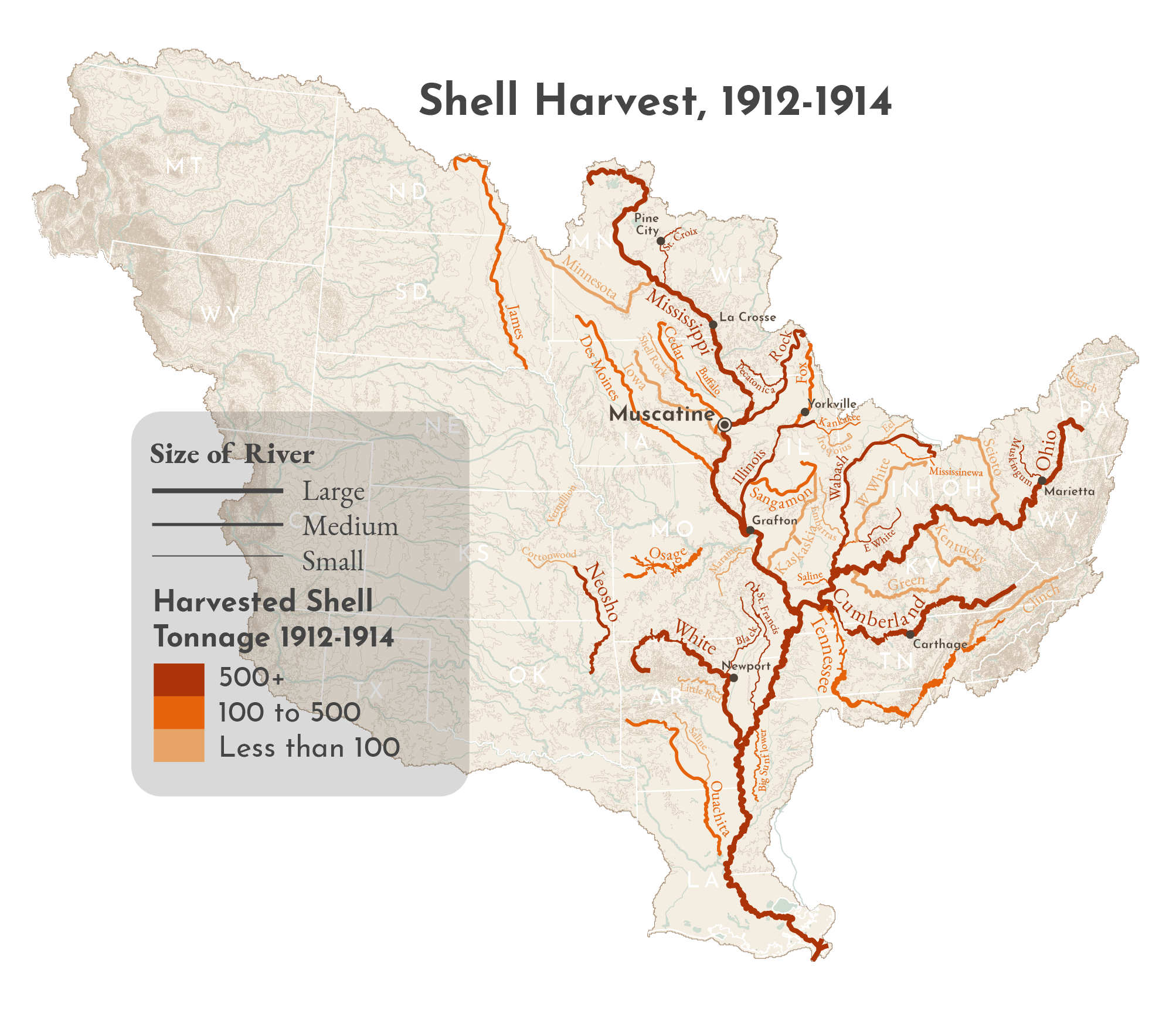
The industry was so vital to the economies of river towns, that when initial scientific reports suggested that mussel populations were being depleated at unsustainable rates, the U.S Department of Fisheries promised to breed and restock mussel populations themselves, rather than regulate the industry.

Weber and Sons Quality Buttons, 1918
These efforts failed.
Beopple himself struggled to compete with the rapid growth of new technology, and watched the industry surpass him. In 1911, he cut his foot on a mussel while wading in the Mississippi, and later died of infection. When the Naiads of Greek Mythology were angered, they often sought vengence.
While the button industry did depelete many mussel populations, it isn't thought to have directly caused any extinctions. However, low populations made mussels more vulnerable to other human impacts...


Prior to European colonization, mussels carpeted many rivers in the Mississippi Basin, especially the Tennessee and Cumberland.

Lock and Dam No. 19, AKA the Keokuk Dam, in the 1980s.
In 1910, construction began on Lock and Dam No. 19, otherwise known as the Keokuk Dam, in Keokuk, Iowa. The dam was first large dam construction on the main channel of the Mississippi, and one of the largest hydroelectric dams in the world at the time.
For many years, the Ebonyshell (Fusconaia ebena) was the staple mussel of the button industry. But ebonyshells relied on the migratory skipjack shad, and only the skipjack shad, to transport their larva. The Keokuk Dam was impassible to Skipjack, and without their assistance, ebonyshell populations upstream of the dam could never replenish.

Interior of an Ebonyshell (Fusconaia ebena).
But the most catastrophic effect of dams on mussel populations is their fundamental alteration of habitats. Changing temperatures and reducing flows. For sensitive mussels, these changes were often impossible to overcome.

Tennessee Valley Authority propaganda poster from World War II
The dam construction work of the Tennessee Valley Authority, and the similar dam building efforts it inspired across the west, changed the landscape of American waterways. And its mussels.

Of the 15 species of extinct mussels in the Mississippi Basin, all of them were native to the Ohio, Tennessee, and Cumberland rivers in the Eastern Basin.
By the 1950s, the button industry was dead, dam construction was occuring at the same breakneck pace it would for the next half-century, and freshwater mussels everywhere were paying the price of progress.
While the passage of the Clean Water Act in 1973 had some positive effect on mussel populations, these effects have done little to offset decades of habitat destruction and over-harvesting. Now, a new threat has emerged.

Cargo ships, staples of the global economy, often unwittingly carry passengers in their ballast water, that are then released when the water is discharged. Prior to 1996, there were no restrictions on ballast water discharge in the United States. In 1988, this lack of regulation led to the arrival of a devastating invader: the Zebra mussel.
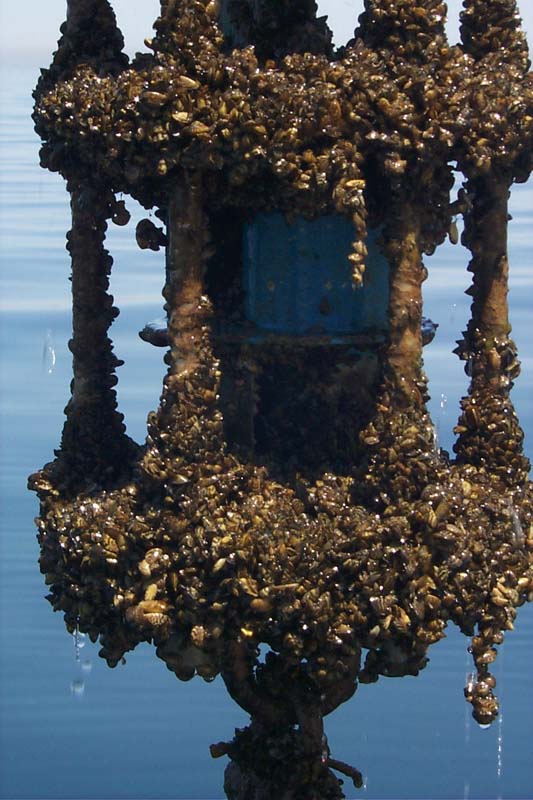
Zebra mussels infesting a current meter on Lake Michigan, 2007
Quickly, the small opportunistic mussels reaked havoc in Lake Michigan, and quickly spread throughout the Ohio and Upper Mississippi rivers.
Unlike most freshwater mussels in the Mississippi, Zebra mussels attach to any hard surface they can find, be it substrate, or other mussels. Due to their massive numbers, Zebra mussels reduce the availability of nutrients and plankton in an ecosystem, causing major stress on native mussels
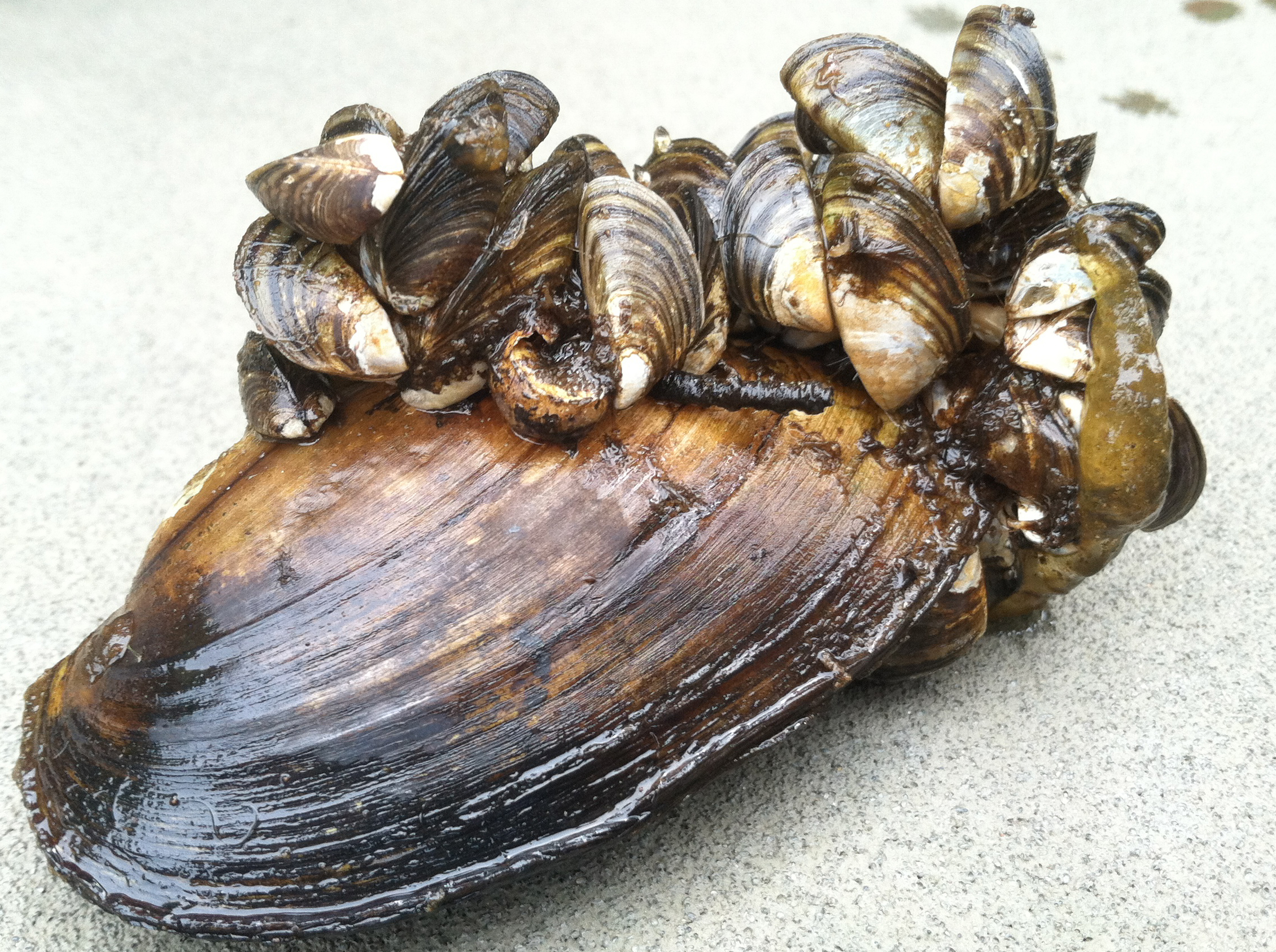
Zebra mussels attached to a larger mussel.
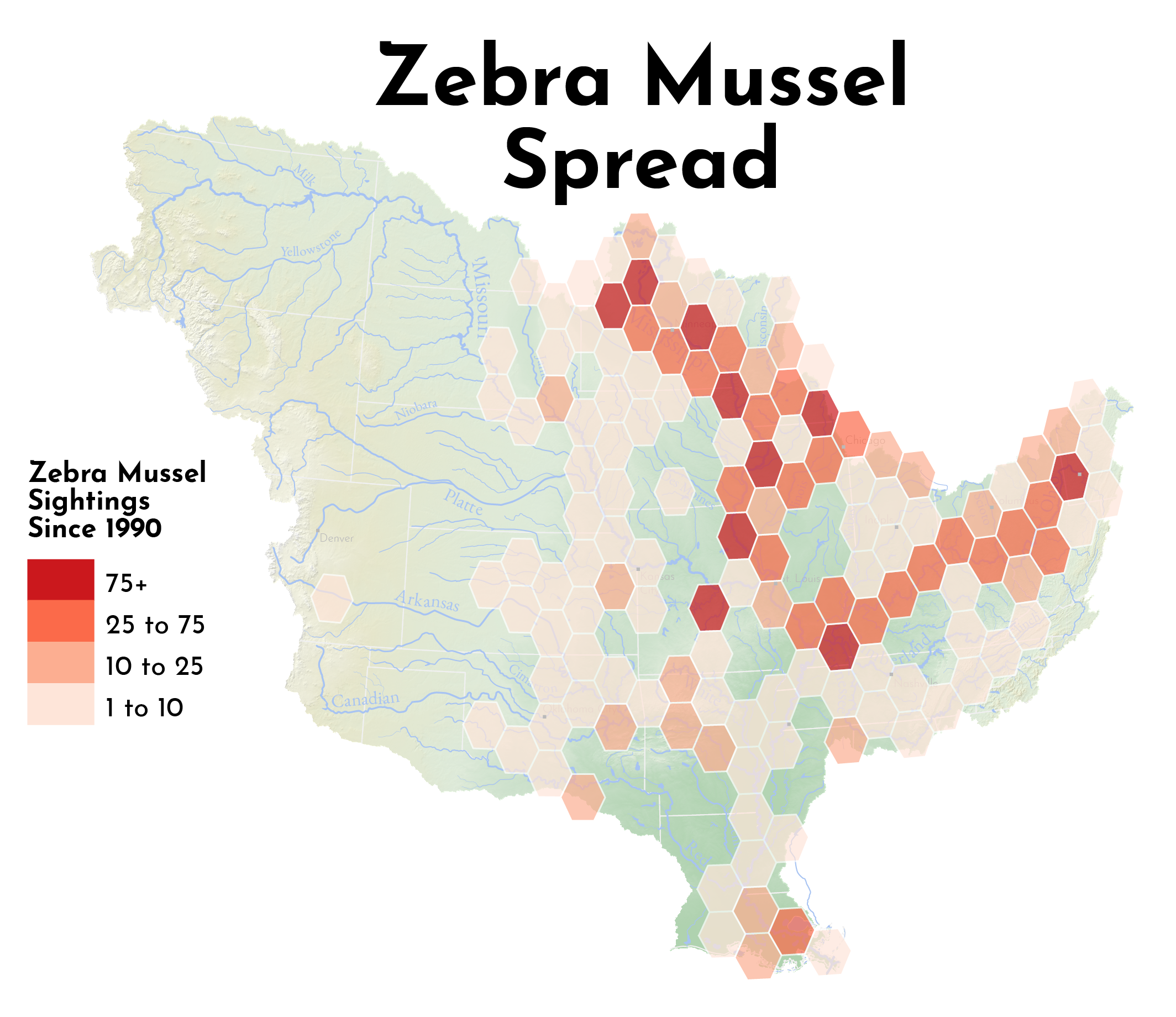
In northern waters, Zebra mussels are devastating, in some cases extirpating already stressed native mussel populations entirely. However, Zebra mussels in southern, warmer waters may have difficulty establishing, meaning that native mussels in the southern basin may escape their effects.
But for many streams, and especially lakes, there is no recourse.
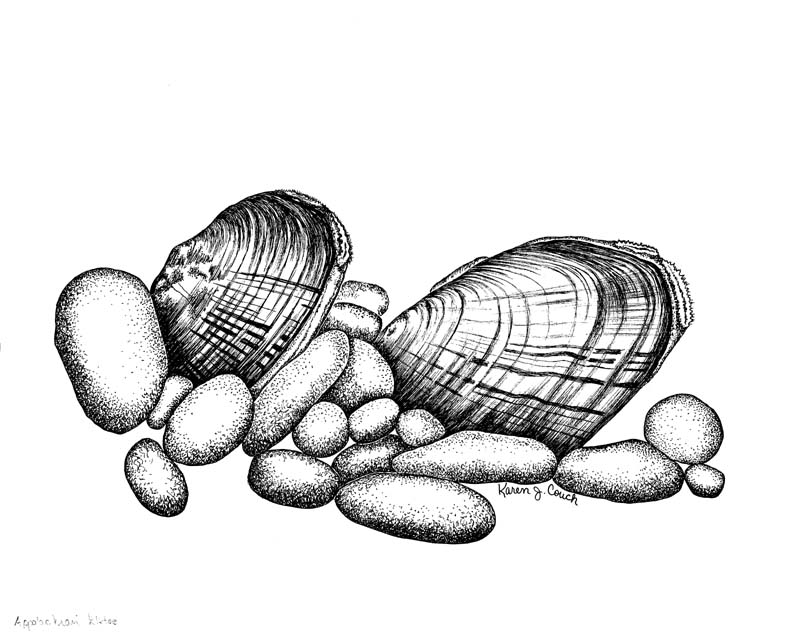
For freshwater mussels, the relationship between myth and reality has always been complicated. Today, as populations continue to decline, action needs to be taken on two fronts. For one, we need continued study of mussel declines, combined with action to spark recovery. We also need stories, old and new, to share the plight of Naiads.
The final map in this story is, in itself, a story. It is a map, and about maps. It shows the impact of freshwater mussels on the map, and suggests that these largely unseen creatures may have had an unmistakable imprint on our perceptions.
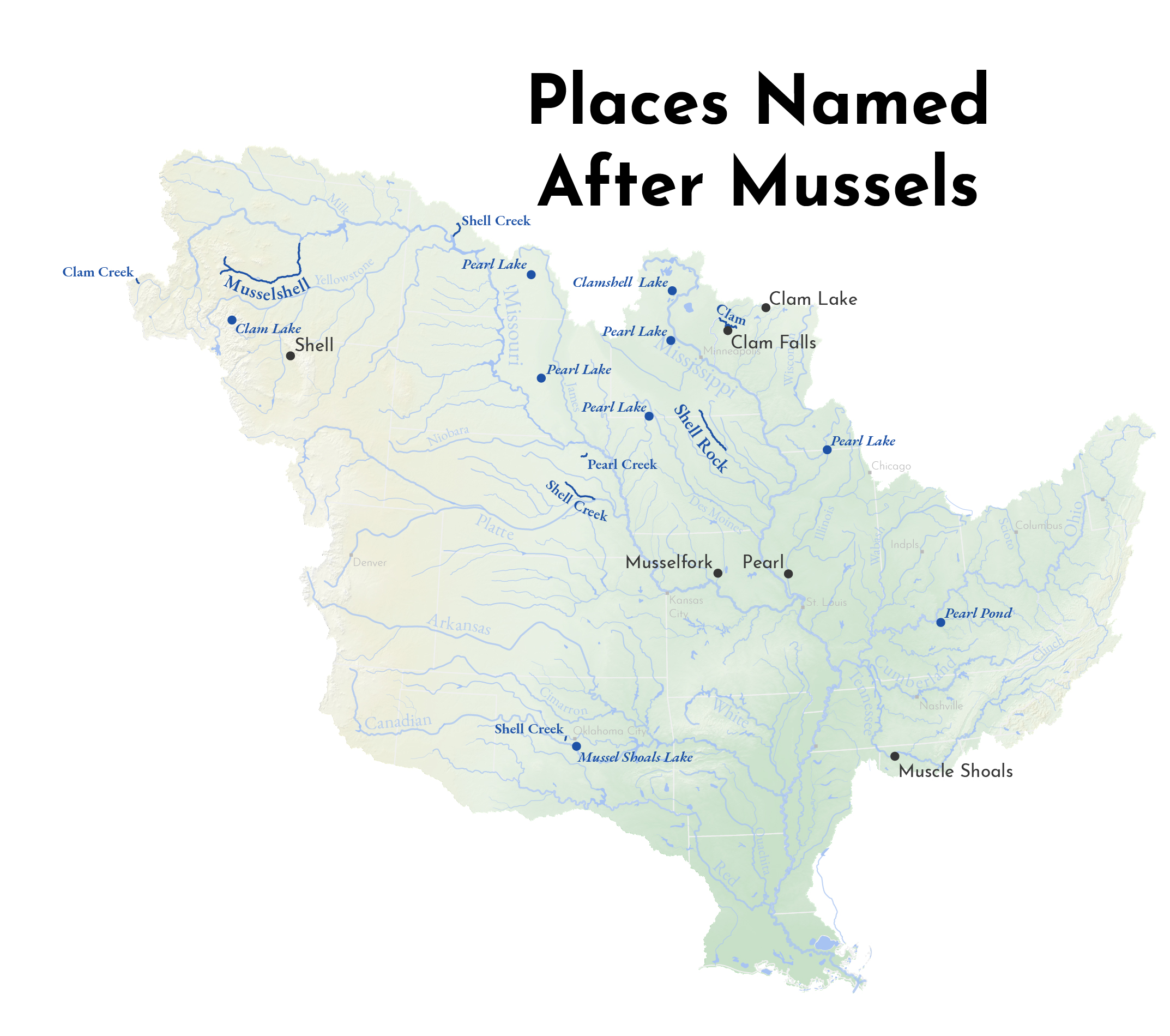
Authors Note:
I became enamored by freshwater mussels soon after moving to La Crosse, Wisconsin, from the West Coast, in 2018. It was on a trip to a nature center in Lansing, Iowa that I learned of the button industry's vital role in the region, and why it eventually died out. It wasn't long before I disovered the sheer variety of mussels, their hysterical names, and their imperiled status. I found what I was most drawn to were the myths and the strange tales. Although I was only able to scratch the surface for this story, I saw commonality in each threat to mussels: all were the result of upbridled capitalist exploitation. Capitalism, particularly in America, is driven by narratives, so it was relatively simple to uncover the stories told used to justify the harvest or death of mussels. There are so many that didn't make the cut, but I hope in the future I can highlight stories about individual rivers and their mussel populations.
-Gareth
Sources
North American Freshwater Mussels: Natural History, Ecology and Conservation, Wendall R. Haag, 2012
Great River: An Environmental History of the Upper Mississippi, 1890-1950, Philip V. Scarpino, 1985
Washboards, Pigtoes, and Muckets: Historic Musseling in the Mississippi Watershed in Historical Archaeology, Cheryl Claassen, 1994
Montana Mussels, Mythology and Ecology in Montana Naturalist Rosalyn Lapier, 2017
An Historical Analysis of Mussel Propagation and Culture: Research Performed at the Fairport Biological Station, James A. Pritchard, 2001
Conservation Status of Freshwater Mussels of the United States and Canada in Fisheries, James D. Williams, Melvin L. Warren, Kevin S. Cummings, John L. Harris, and Richard J. Neves, 1993
Report of the United States Commissioner of Fisheries, Hugh M. Smith, 1916
A Brief History of the Clamming and Pearling Industry in Prairie du Chien, Wisconsin, Eric F. Temte, 1968
The Fresh-Water Pearls and Pearl Fisheries of the United States, George F. Kunz, 1898
Fresh-water Mussels and Mussel Industries of the United States, R.E Coker, 1919
Images of America: Waynesville and Wayne Township, Dennis E. Dalton, 2012
Mussel Conservation Status, Nature Serve Explorer
Major Dams, Bureau of Transportation Services
North American Large Rivers, USGS ScienceBase
Zebra Mussel Sightings, USGS Non-Indigenous Aquatic Species Database
Watershed Boundaries, USGS Watershed Boundary Dataset
Harvesting the River, Illinois State Museum
When the Fox River was known for its pearls—and pearl buttons…, History on the Fox
Button Blank Industry, Encyclopedia of Arkansas
Clamming on the James, South Dakota Magazine
Looking Back: River mussels made Carthage man into 'Pearl King', Lebanon Democrat
Bluefer Purpleshell, Missouri Department of Conservation
Giant Floater, Missouri Department of Conservation
Ebonyshell, Missouri Department of Conservation
Orangefoot Pimpleback, Illinois State Museum
Rock Pocketbook, Illinois State Museum
Fanshell, Illinois State Museum
From "The Elements" by Giulio Carpioni, The MET Museum
Currier and Ives Fashion Advertisement, 1870, U.S Library of Congress
1900 Hays (Kansas) Free Press, U.S Library of Congress
AMERICAN PEARL FISHERIES GIVE OUT, New York Times, 1902
"Who's got the button?", Iowa Museum Assocation
John Beopple Cutting Buttons, Encyclopedia Dubuque
Beopple Button Factory, Upper Mississippi Valley Digital Photo Archive
Clamshell Road, Upper Mississippi Valley Digital Photo Archive
Weber and Sons Quality Buttons, Upper Mississippi Valley Digital Photo Archive
Tennessee Valley Authority Posters, Yale University Energy History
Keokuk Dam, Wikipedia
Zebra Mussels, UMN Extension
Zebra Mussel Encrusted Meter, Wikipedia
Freshwater Mussel Linework, Kareen Couch VIA USFWS